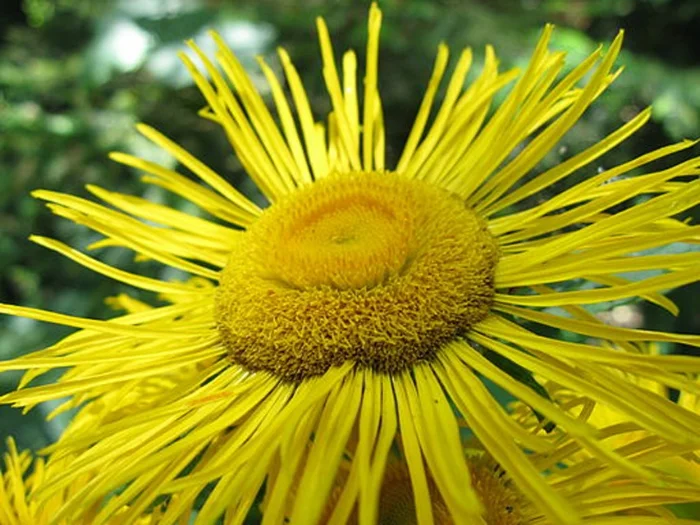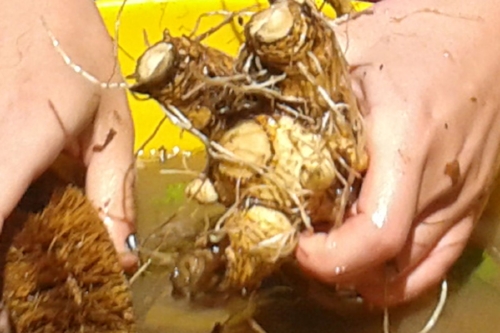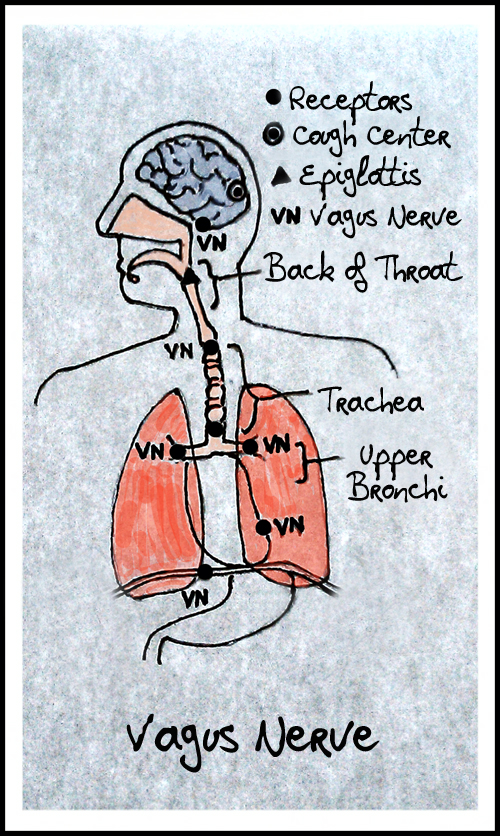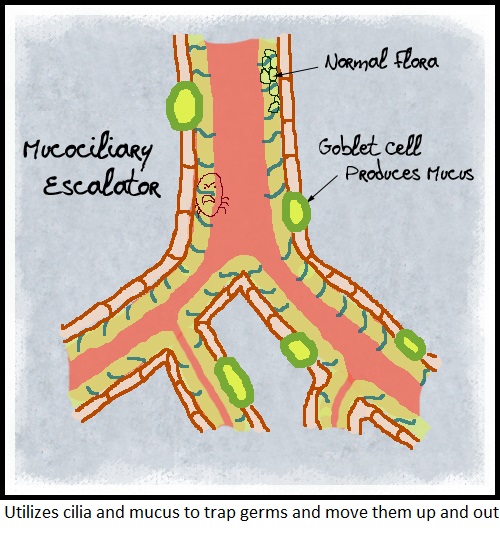The Medicine of Elecampane
The first day of spring is coming up quick on the calendar, but the weather in the Northeast doesn't seem to be aware of it. We have had one of the coldest and snowiest winters in many years and it has been hanging on and on. Along with the extended winter has come more coughs and colds and general dis-ease. One of my all time favorite remedies for colds, especially when the lungs are affected, is Elecampane. Elecampane was one of my very first plant allies as I used to suffer from asthma and chronic lung infections. Elecampane can remedy many different lung conditions and I have seen it work, at times, almost immediately. I am also deeply in love with the bright yellow luminosity of its flower and the strong, aromatic Earthy smell of its root. No matter how many times I have harvested this root, I am always enraptured by the first whiff of its perfume, and have been known to kneel right down with my nose to the dirt just breathing it in as deeply as I can.
Elecampane(Inula helenium) is a perennial plant in the composite family and is native to Europe. It has naturalized widely in the Northeast and Canada and prefers lowland wet ground. I usually find it not right next to streams, but just above them, often on the side slopes in the sun or partial shade. I always gather the roots in the spring before the stem shoots up and starts to flower. Elecampane can be cultivated from either seed or root stock.
Elecampane has a vast array of virtues but is probably best known for its affinity towards the lungs and as a treatment for acute infection and chronic respiratory conditions. It is antibacterial and antiseptic relieving bronchitis, whooping cough, and any damp phlegmatic lung infection especially those that are stuck with an unproductive cough. A good indication for Elecampane is when there is green or yellow mucus or a damp, moist cough of any sort particularly when it has been long standing past the acute phase.
Elecampane. Inula helenium
Qualities: Sweet, bitter, pungent and aromatic, warm and dry
Parts used: Root,flower, flower essence
Actions: Expectorant, decongestant, antibacterial, stimulant, restorative,carminative, Qi tonic
It is considered warm and dry in the third degree in the Old World classification system. This indicates a strong medicine although it is very safe and non-toxic, yet still very powerful in action. Because it can be drying and heating, I will sometimes mix it with other cooling, soothing herbs. An example would be if I desired a deeper, more effectively descended cough, although the cough seemed dry and irritated, I would add something like mullein or violet leaf to reduce heat and moisten tissue.
Contra-indications include pregnancy as it is a uterine stimulant and has a history of use in helping to expel after-birth. I have also had one case where someone found that they had severe stomach cramping after taking a dose of tincture. Since then, I usually have everyone start with a small dose like 10-15 drops. High end adult dose can go up to 3/4 of a teaspoon or 4ml. I have used up to a teaspoon for a large adult.
Elecampane is a stimulating expectorant and works on the lungs by activating the tissue of the upper digestive tract through irritation. This may explain why it can cause gastric upset in some cases, although, it does contain bitters and some amount of demulcent mucilage which should counter this effect. In fact, it has a history of use as a digestive remedy for bloating and indigestion. The saponins and essential oils in Elecampane stimulate the superficial nerve endings in the digestive tract triggering the vagus nerve which stimulates the mucociliary escalator in the respiratory tract. The mucociliary escalator is a function of the respiratory tract whereby the cilia and mucus along the respiratory tract work to collect micro-organisms and foreign particles in order to move them upward toward the pharynx where they can be eliminated.
I have seen Elecampane work many, many times in the past 20 or so years and have always been amazed at its effectiveness. The important attribute to note when using this herb, is that it may at first appear to make the condition worse because it will cause the cough to descend deep enough into the lungs to make coughing more productive. It may also increase mucus expectoration as it loosens and extricates stagnant phlegm. The removal of old mucus makes way for new secretions to arise along the respiratory membrane containing fresh, clear, and newly adapted immune cells.
Of the instances that I have used Elecampane, the one time that stands out the most to me is when my son, who was then about 7 years old, had the H1N1 or Swine flu. It had swept through our local school that year and many of the kids were pretty sick for awhile. Aidan, actually recovered rather quickly after about 3 days(thank you Elderberry!), but he had this lingering cough that was getting worse and worse to the point where he seemed to be coughing constantly. I was beginning to become concerned about pneumonia and had been trying other cough remedies such as Wild Cherry bark, Mullein, and Coltsfoot; all to no avail. I was actually considering a trip to the ER but, remembering my past experience with Elecamapne, I decided to try one more thing. I have always used an average dosage of about 20-40 drops of tincture which equals about 1/2 of a teaspoon for an adult, although I have seen dosages notated at up to 1 teaspoon. I would recommend anyone using this for the first time to start with no more than 10 drops. I gave him 1/4 of a teaspoon for the first dose. Within an hour the coughing subsided to about half as often. In other words, he was breathing in between coughing spells. After the second dose he was only coughing occasionally and by the next day the cough was nearly gone.
Elecampane has a rich repertoire as a remedy for many other conditions including as a general tonic for Qi deficiency or overall low resistance, fatigue and lack of energy. It has even been known to be helpful for certain types of low-grade, stuck depression related to grief from being dislocated from ones homeland or sense of home. As grief always locates itself around the heart chakra/lung area and can manifest physical symptoms that are heart or lung related. Elecampane has some indications as a remedy for certain heart ailments according to Matthew Wood. The flower essence would definitely be helpful for heart centered depression and lack of vital force.
Elecampane is also nourishing; a quality that contributes to its Qi enhancing character, as it contains about 40% inulin. Inulin is similar to a food starch and is soluble in hot water, but not in an alcohol tincture. When taken as a decoction(cooked in water) it is a pre-biotic meaning that it is nourishing for the good bacteria the live along our digestive tracts. The health and abundance of these beneficial bacteria improve digestion, assimilation and overall health. Inulin has been claimed to lower blood sugar but that claim seems to have been dispelled. According to Paul Bergner, Inulin is not absorbed orally and "is recommended sometimes for diabetics; it has a mildly sweet taste, and is filling like starchy foods, but because it is not absorbed, it does not affect blood sugar levels. Despite the similarity of its name to insulin, inulin has no connection with that hormone either chemically or through physiological activity. Inulin is soluble in hot water, but only slightly soluble in cold water or alcohol, so is not present to any significant extent in tinctures."
Elecampane has been a significant member of my herbal apothecary and is always present in my medicine bag. I have been often grateful for its stealth and accuracy of action, and it has been a trusted remedy for myself, my family and my clients over and over. For those of us who live in damp, cold climates it provides much needed light and warmth. I have no doubt that this plant has the energetic capacity to embody large concentrations of sun derived heat and healing within its form and structure. It is always a delight to work with right from the harvest, through the transformation into an herbal preparation, to it's direct contact with people and their health conditions.
Resources:
Medical Herbalism-Journal for the Clinical Practitioner Inulin by Paul Bergner
The Earthwise Herbal by Matthew Wood
The Energetics of Western Herbs by Peter Holmes






